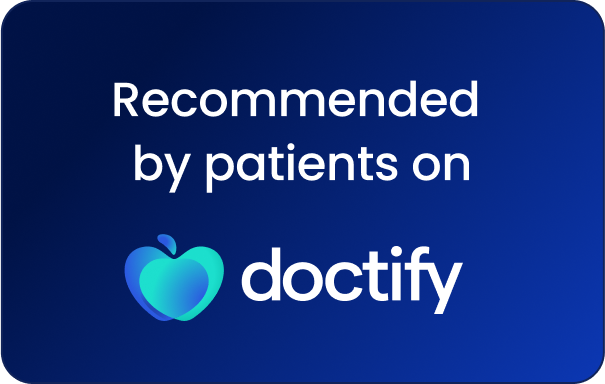After upper gastrointestinal (GI) surgery, the path forward can seem uncertain. Between the fatigue and the natural instinct to protect your body, the idea of exercise might feel worlds away. While rest is a vital piece of the puzzle, gentle and mindful movement is the tool that can truly empower your healing. This guide is your post-op playbook, designed to walk you through why movement matters and provide safe, practical steps that are tailored to your type of surgery, helping you get back on your feet feeling stronger every day.
The Unsung Benefits of Post-Op Exercise
It may feel counterintuitive, but starting to move is one of the most important steps you can take after your operation. Modern, evidence-based recovery plans like ERAS (Enhanced Recovery After Surgery) protocols emphasize early mobilisation for a reason. Incorporating gentle, approved activity into your routine provides critical support for your body as it heals.
- It Boosts Your Circulation. Think of light activity as a pump for your circulatory system. Improved blood flow delivers more of the oxygen and nutrients your healing tissues desperately need and helps reduce the risk of complications like blood clots.
- It Fights Off Fatigue. Moving your body is one of the best ways to combat that deep, post-surgical exhaustion. Regular, gentle movement helps restore your energy levels so you can feel more like yourself again.
- It Lifts Your Spirits. The recovery period can take a mental toll. Exercise is a natural mood-booster that releases endorphins. These are our body’s “feel-good” chemicals that can ease the anxiety and feelings of depression that sometimes accompany the healing process.
Tailored Exercise for Your Recovery
It is essential to remember that every recovery is unique, so the right exercises for you will depend on the specific procedure you had. The following are general guidelines that can help you in your discussion with your healthcare team. Always get clearance from your surgeon, specialist nurse, or physiotherapist before beginning any new activity.
Exercises After Gastrectomy & Esophagectomy
Your recovery will focus on protecting your abdominal incision while gently re-engaging your core and improving your stamina.
- Deep Breathing. Continue with the diaphragmatic or “belly” breathing you were likely taught in the hospital. This is crucial for lung function, especially after chest or upper abdominal procedures, and can help manage discomfort.
- Progressive Walking. Walking is your main goal and the foundation of your recovery. Start with very short, slow strolls around your home, and as your energy allows, gradually increase the duration.
- Gentle Core Engagement. Once you are cleared by your physiotherapist, you can try exercises like pelvic tilts. To do this, lie on your back with your knees bent and gently flatten your lower back into the floor, holding for a few seconds. This activates your core muscles without strain.
Rehabilitation After Bariatric Surgery
After bariatric surgery, the focus is on building stamina, preserving lean muscle mass, and protecting your joints as you lose weight.
- Consistency is Key. Aim for 20-30 minutes of walking on most days of the week, as your energy permits. Consistency is more important than intensity in the early weeks.
- Light Resistance Training. When your surgeon clears you, which is often after six to eight weeks, you can incorporate light resistance. This can include using resistance bands for simple arm curls or performing bodyweight exercises like seated leg extensions. Always focus on high repetitions with low weight or resistance.
- Fuel Your Activity. Pay close attention to hydration and your new nutritional requirements. Your body needs the right fuel to support your healing and your exercise efforts.
Recovery After Pancreatectomy or Other Complex Abdominal Surgeries
For these procedures, your recovery must be exceptionally gradual. The priority is to rebuild core stability and carefully manage the significant fatigue that often follows.
- Prioritise Professional Guidance. Your recovery must be guided by a specialist physiotherapist who understands the complexities of your surgery. They will provide a structured, safe, and personalised plan.
- Focus on Posture and Stability. Gentle exercises will focus on activating the deep core muscles that support your spine and abdomen. This must be done without putting any strain on your surgical site.
- Pacing is Everything. Progress will be slow and steady. It is vital that you do not push through pain or fatigue. Listen to your body and understand that rest is an active part of your rehabilitation.
Progression and Precautions
Your body provides constant feedback during recovery, and it is your job to listen carefully. Pushing too hard, too soon can set back your progress. It is crucial to be aware of your body’s signals and know when to stop.
Stop exercising immediately and contact your GP or surgical team if you experience any of the following:
- Sharp or sudden pain at your incision site or elsewhere
- Dizziness, light-headedness, or shortness of breath
- Fever, swelling, or unusual discharge from your incision
- Excessive discomfort that does not subside with rest
Recovery is a balance. The goal is to be active enough to promote healing but gentle enough to allow for rest and repair. Never sacrifice the rest your body needs for an extra walk or exercise session.
Your Path Forward
Making mindful movement a part of your daily recovery plan can make a profound difference in how quickly and how well you heal. By starting slow, staying consistent, and always listening to your body’s signals, you can take an active role in regaining your strength and getting back to the life you love.



